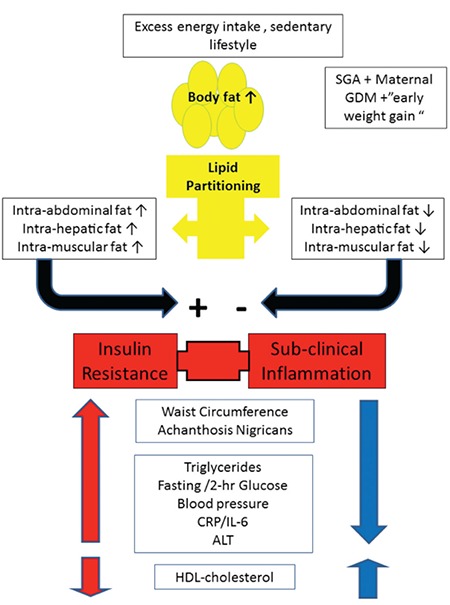Figure 1. Pathophysiology of insulin resistance and its clinical manifestations. Energy excess and a sedentary lifestyle lead to increased body fat. The ability of subcutaneous fat tissue to expand will determine the lipid partitioning profile. Those with greater ability to expand their subcutaneous depot will have less intra-abdominal and liver/muscle fat deposition and will thus be more insulin sensitive. Those with inability to increase subcutaneous fat will have an unfavorable lipid partitioning profile with increased intra abdominal lipid deposition as evidenced by greater waist circumference and liver/muscle lipid deposition, manifesting as greater insulin resistance and a pro inflammatory profile. This adverse profile leads to elevation of plasma glucose, triglycerides and blood pressure and reduced high density lipoprotein-cholesterol. HDL: high density lipoprotein, CRP/IL-6: C-reactive protein/interleukin-6, ALT: alanine amino transferase, SGA: small for gestational age, GDM: gestational diabetes mellitus.

